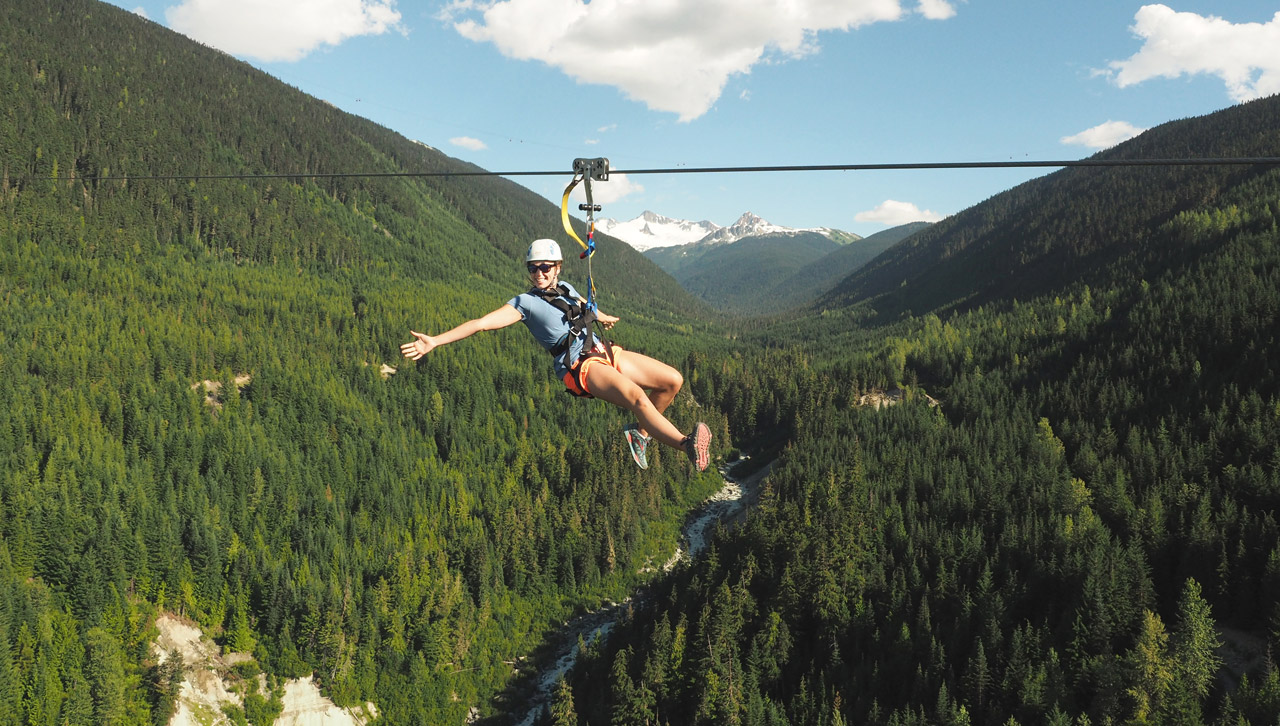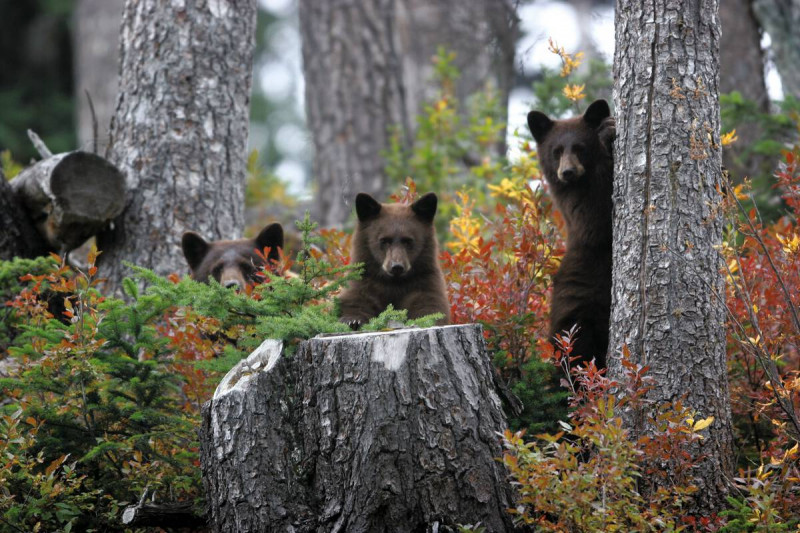p: mike crane | TW
Whistler is a paradise for outdoor enthusiasts, renowned for its breathtaking scenery, world-class skiing, and vibrant wildlife. Among the most iconic inhabitants of this rugged terrain are the bears that call the Sea to Sky home.
Spotting these magnificent creatures in their natural habitat can be an awe-inspiring experience, but it's essential to do so responsibly and safely.
At Ziptrek, we work in these amazing animals' habitats every day and love to educate our guests on how to respect their habitats and how to view them safely.
Understanding Bear Behavior
Before setting out to spot bears in Whistler, it's crucial to understand a bit about their behavior.
Black bears and occasionally grizzly bears are common in the area. Despite their size and power, bears are typically shy and will avoid human contact if given the opportunity. They're most active during the spring and summer months, foraging for food after emerging from winter hibernation.
Choosing the Right Locations
Whistler offers various locations where bears are commonly spotted, but it's essential to choose spots that minimize disturbance to the animals and ensure visitor safety. Popular areas for bear sightings include:
-
Whistler Blackcomb Mountain: Keep an eye out for bears while hiking or biking on the mountain trails, particularly in the early morning or late afternoon.
-
Whistler Village: Believe it or not, bears have been known to wander into the village occasionally, especially during the spring when they're searching for food.
-
Whistler Valley Trail: This extensive network of paved trails winds through forests and alongside rivers, providing excellent opportunities for spotting bears from a safe distance.
- Ziptrek Ecotours: Yes, we see bears on our course all the time! Why do you think we call one of our tours the Bear Tour!
Practicing Responsible Wildlife Viewing
When observing bears in Whistler or any other natural habitat, it's crucial to prioritize their well-being and safety, as well as your own. Here are some tips for responsible wildlife viewing:
-
Keep Your Distance: Bears should never be approached or fed. It's recommended to maintain a distance of at least 100 meters (about 300 feet) from bears to avoid startling them or provoking defensive behavior.
-
Use Binoculars or a Camera: Binoculars or a zoom lens can help you observe bears from a safe distance without disturbing them. Remember to turn off the camera flash, as it can startle the animals.
-
Stay Alert: Bears are often most active during the early morning and late afternoon. Keep your eyes and ears open for signs of their presence, such as rustling in the bushes or overturned rocks.
-
Travel in Groups: If you're venturing into bear country, it's safer to travel in a group rather than alone. Bears are less likely to approach a larger group of people.
-
Respect Trail Closures: If a trail is closed due to bear activity, respect the closure and choose an alternative route. Ignoring trail closures not only puts you at risk but also disrupts the bears' natural behavior.
What to Do If You Encounter a Bear
Despite our best efforts to avoid them, encounters with bears can still occur. Knowing how to react can mean the difference between a harmless encounter and a dangerous situation. If you encounter a bear in Whistler:
-
Stay Calm: Avoid making sudden movements or loud noises that could startle the bear. Stay calm and try to assess the situation.
-
Back Away Slowly: If the bear hasn't noticed you, quietly back away and leave the area. Do not run, as this may trigger a chase response.
-
Make Yourself Big: If the bear does notice you, make yourself appear larger by raising your arms and speaking loudly in a firm but calm voice. Slowly back away while keeping an eye on the bear.
-
Do Not Approach: Under no circumstances should you approach a bear, especially if it's feeding, with cubs, or displaying aggressive behavior.
-
Use Bear Spray: If a bear approaches aggressively, use bear spray as a last resort. Aim for the bear's face and follow the instructions on the canister.
Whistler is bear country
Spotting bears in Whistler is a thrilling experience that allows us to connect with the natural world and appreciate the beauty of these magnificent creatures.
By practicing responsible wildlife viewing techniques and respecting bear habitats, we can ensure that both humans and bears can coexist peacefully in this stunning wilderness. Remember, the safety of both you and the bears should always be the top priority when venturing into bear country.
Enjoy your time in Whistler, and may your bear sightings be both memorable and safe!
 Call Toll Free: 1.866.935.0001
Call Toll Free: 1.866.935.0001
 Call Toll Free: 1.866.935.0001
Call Toll Free: 1.866.935.0001

